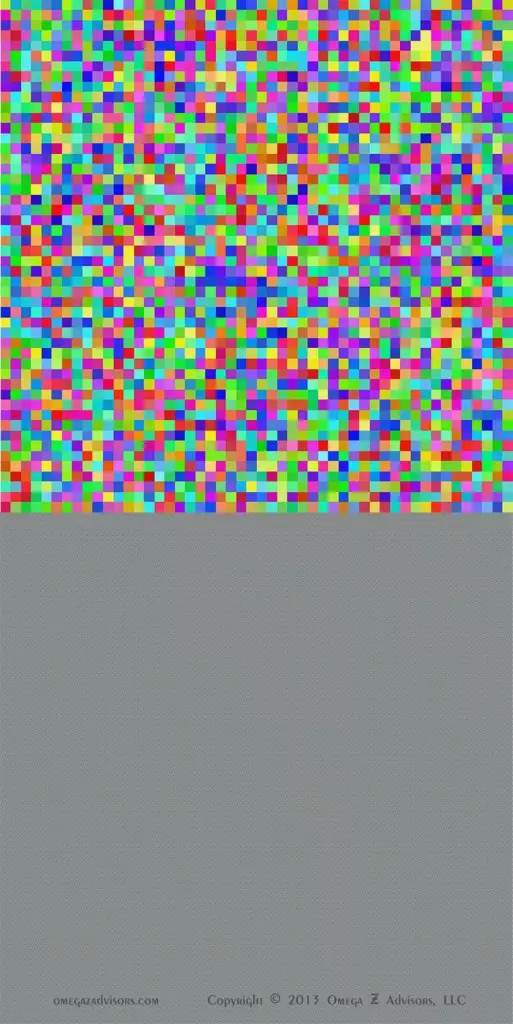Natural Mistake of Grouping

Grouping things is easier and requires much less thought than trying to take in all the individual differences that exist.
Look at the figure to the right. The top is a multicolored square, the bottom a gray one. Yet, only one single attribute distinguishes the two: the top is a 10,000-x magnification of the bottom. The “gray” square is too large for me to load on the blog; however, if you copy and magnify it, you can begin to make out the multicolored squares although condensing added grayness.
Why is this interesting? Well, it shows how our minds work to help us . . . and delude us. Our physical attributes can teach us about our non-physical ones. For instance, if everyone is physically unique, then we can reasonable conclude everyone has unique personalities too.
These diagrams taught me two things. First, even though the individual squares are too small for my eyes, my eyes must put something in that space. Similar to the blind spot our eyes fill, my eyes automatically do this. Second, my eyes blur individual distinctions to fill the void with gray, thus simplifying things for me.
Our minds do the same with mental complexities such as people. For instance, upon entering a room filled with three hundred people, we work to fill our knowledge void by asking something like, “What group is this?” or “Who are these people?” Thus, mentally we process individual complexities (multicolored squares) into a simplified group (one gray square).
Grouping speeds our assimilation of knowledge at the expense of depth. Grouping comforts us with the illusion that we know something. It quickly fills our knowledge void similar to the way fast food fills our hungry stomachs with empty calories. Therefore, in business, grouping creates targets of opportunities if we are motivated to dive into the details, especially with talent. Grouping is natural, but no two people are the same.

